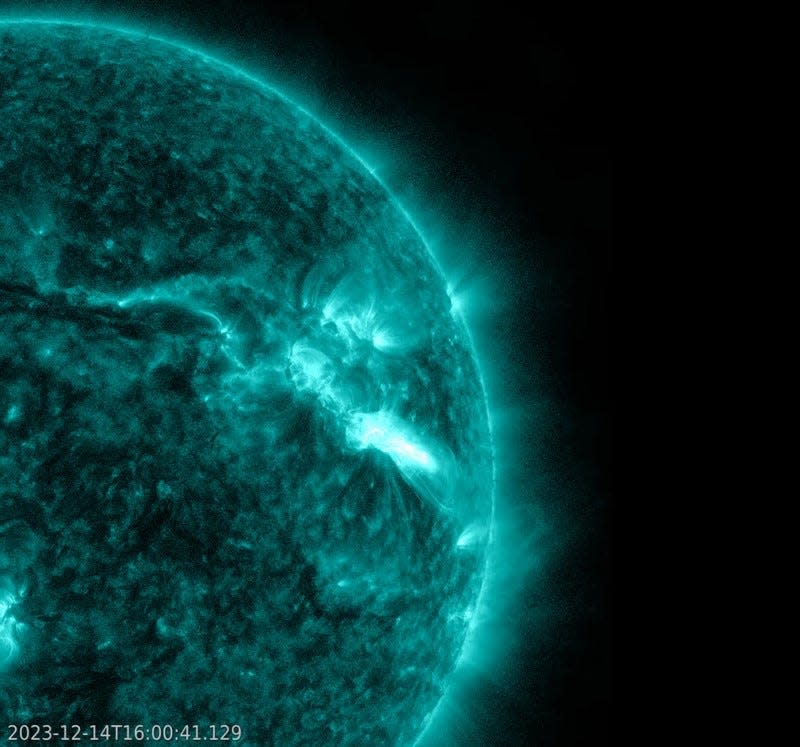Strongest solar flare in years could create awesome northern lights display: What to know
The strongest solar flare in over six years erupted from the sun Thursday afternoon, causing radio blackouts here on Earth, primarily in South America. Within the next couple of days, solar activity associated with the flare could also produce auroras as far south as New York in the East and Idaho in the West, forecasters said.
According to SpaceWeather.com, this is the strongest flare of Solar Cycle 25 (so far) and the most powerful eruption the sun has produced since the great storms of Sept. 2017.
The Space Weather Prediction Center, which is part of NOAA, called it an "amazing event," and "likely one of the largest solar radio events ever recorded." Radio communication interference with aircraft were reported, the SWPC said, and impacts from the flare "were felt from one end of the nation to the other."

What are solar flares?
Solar flares are powerful bursts of energy from the sun, NASA said. "Flares and solar eruptions can impact radio communications, electric power grids, navigation signals and pose risks to spacecraft and astronauts," NASA said.
Thursday's flare is classified as an X2.8 flare. X-class denotes the most intense flares, while the number provides more information about its strength.
Additionally, the prediction center is monitoring a possible Earth-directed coronal mass ejection associated with this flare.
What are coronal mass ejections? Will we see the aurora?
Coronal mass ejections are clouds of electrified, magnetic gas ejected from the sun and hurled into space with speeds ranging from 12 to 1,250 miles per second, according to NASA.
They can produce geomagnetic storms here on Earth, which in turn create auroras. Friday afternoon, forecasters from the SWPC put out an alert for a G2 "moderate" level geomagnetic storm for both Saturday and Sunday.
G2 storms can produce auroras, which have "been seen as low as New York and Idaho," the SWPC said.
Aurora lovers, 2024 might be your year
The solar forces that produce auroras are predicted to peak next year, and at a more intense level than previously thought, forecasters from the Space Weather Prediction Center said in October.
"Solar activity will increase more quickly and peak at a higher level than that predicted by an expert panel in December 2019," the prediction center said in a statement. "The updated prediction now calls for Solar Cycle 25 to peak between January and October of 2024."
This article originally appeared on USA TODAY: Strongest solar flare in years could produce auroras, northern lights

